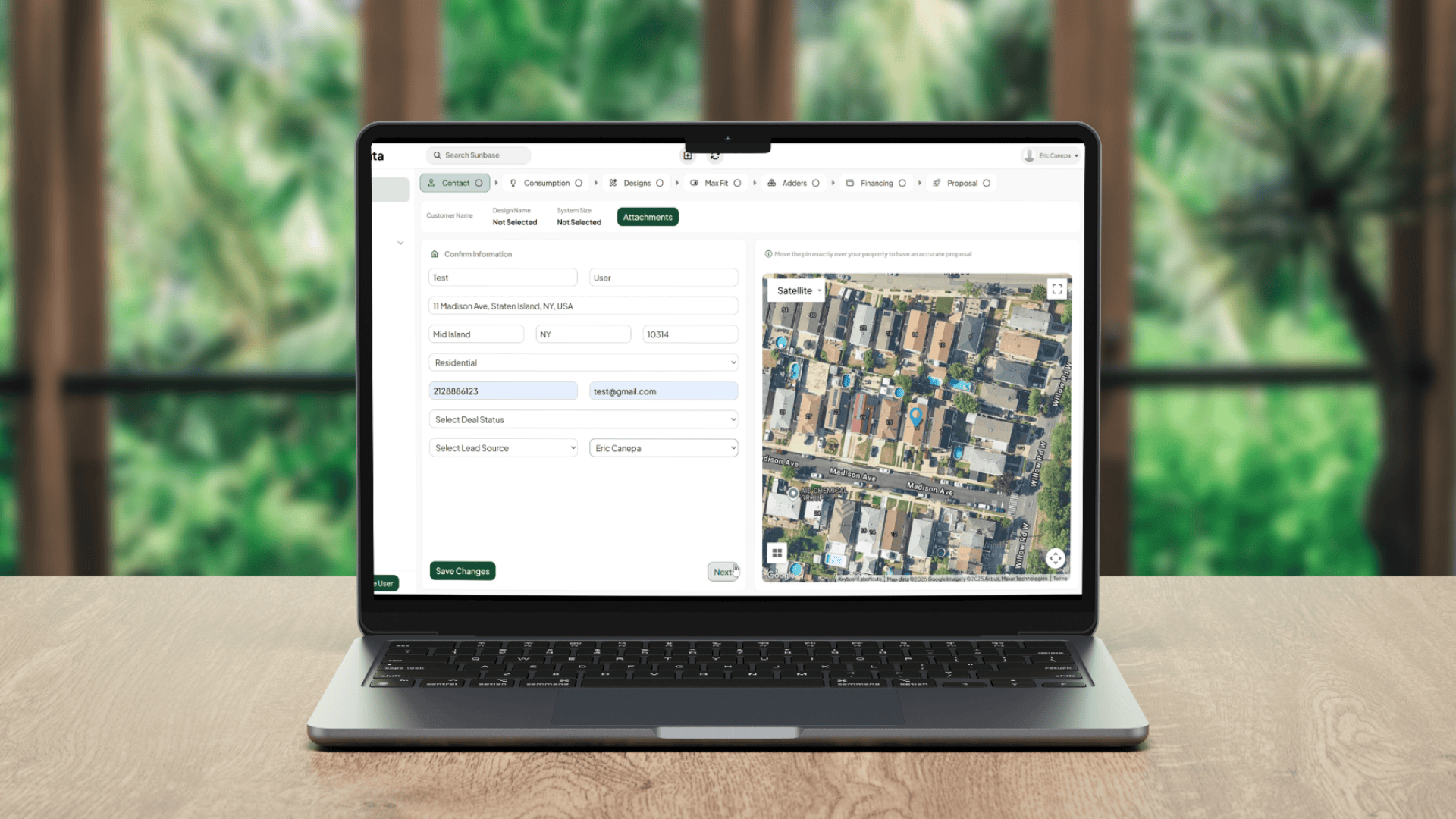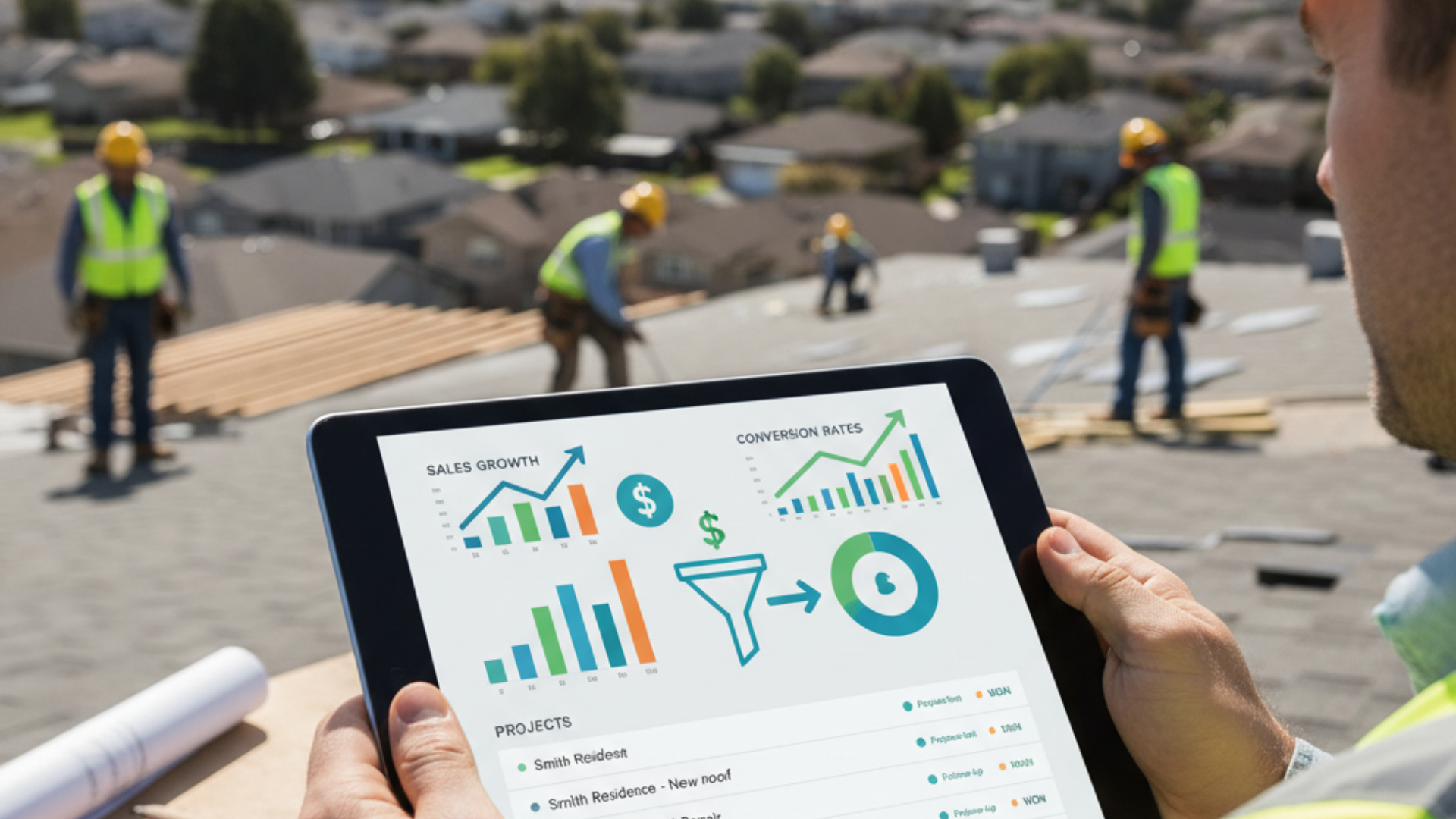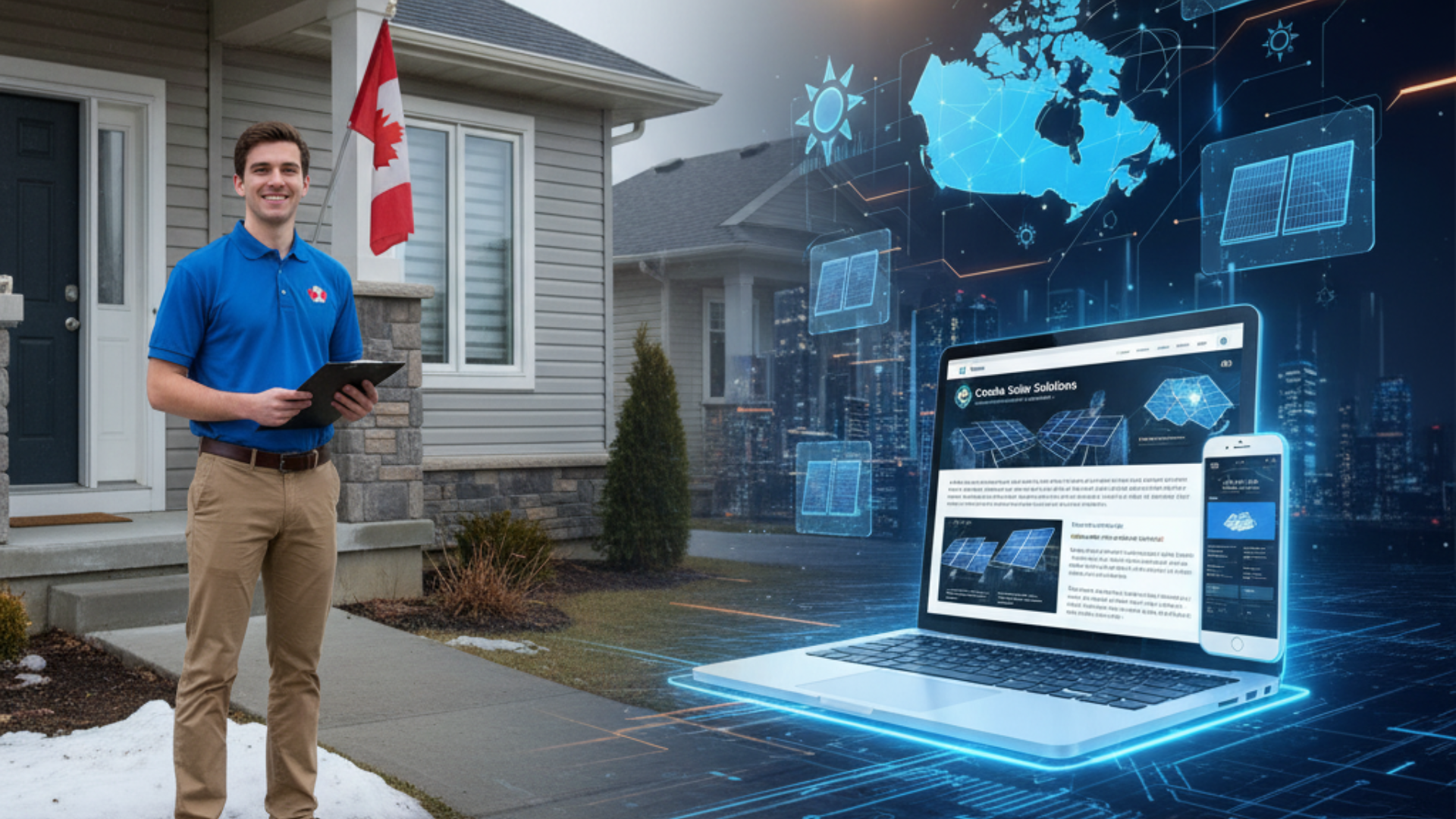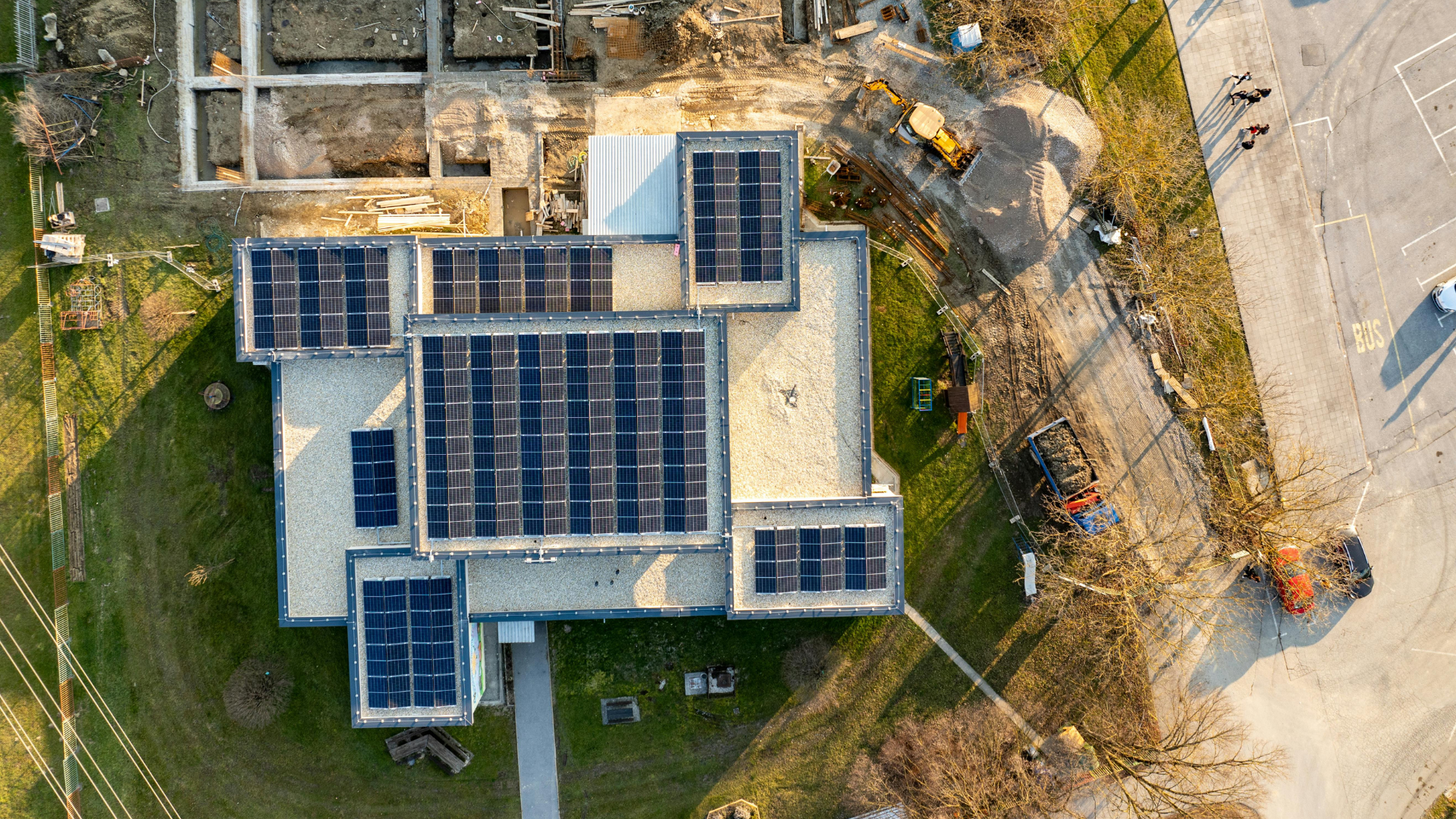September 24, 2024
Roofing CRM
The roofing industry is experiencing a technological revolution, and Customer Relationship Management (CRM) systems are at the forefront of this transformation.
Advanced roofing CRM platforms can help these business owners by incorporating automation, sophisticated analytics, and deep customer insights, enabling them to streamline operations, enhance customer experiences, and make data-driven decisions.
According to recent industry reports, companies that utilize CRM systems see an average increase in sales by 29%, sales productivity by 34%, and sales forecast accuracy by 42%. These impressive statistics highlight the potential impact of modern CRM solutions on roofing businesses.
With the roofing industry projected to grow at a compound annual growth rate (CAGR) of 4.9% from 2021 to 2028, adopting advanced CRM technology is more crucial than ever for staying competitive.
In this blog, we will explore how the evolution of CRM technology is shaping the future of roofing businesses.
Roofing CRM Software - Overview
A Roofing CRM (Customer Relationship Management) is a specialized business management software tailored for the roofing industry. It is a comprehensive tool for roofing contractors and companies, enabling them to manage customer interactions, streamline the sales process, and oversee project management all in one place for a roofing company.
In an industry where customer relationships and project efficiency are paramount, a roofing CRM is indispensable. It helps roofing businesses organize their operations, enhance customer satisfaction, and ultimately boost revenue.
Benefits of Using a Roofing CRM for Your Roofing Business

Implementing a roofing CRM can revolutionize your roofing business by offering a multitude of benefits. A roofing CRM helps manage multiple roofing projects efficiently, improving organization and streamlining processes from budgeting to implementation and client communication.
1. Improved Organization
A roofing CRM consolidates all customer contact details, communications, documents, and more into a single job file, making it easy to access and manage information.
2. Increased Staff Accountability
With visible lead statuses, projects, and tasks, a roofing CRM enhances staff accountability, ensuring everyone is informed about progress and responsibilities.
3. Hours Saved Each Day
A roofing CRM saves valuable time by automating repetitive tasks and communications, reducing double data entry, and eliminating the need for unnecessary third-party applications.
4. Easier Performance Tracking
Roofing CRMs provide tools to monitor business performance, helping you identify growth opportunities and areas for improvement.
5. Better Customer Service
With all customer information at your fingertips, you can serve your customers more effectively, leading to increased job profits and customer satisfaction.
Must Read: 10 Powerful Ways a Roofing CRM Can Boost Your Business Growth
I. Automation in Roofing CRM
Automation is a game-changer for roofing businesses, offering numerous benefits that streamline operations and improve productivity.
a. Benefits of automation for roofing contractors

1. Efficiency
Time-Saving: Automation significantly reduces the time spent on repetitive tasks such as data entry, appointment scheduling, and follow-up reminders. This allows teams to focus on more critical activities that require human expertise, such as customer consultations and complex problem-solving.
Streamlined Processes: Automated workflows ensure that tasks move seamlessly from one stage to the next without manual intervention, speeding up project timelines and improving overall productivity.
2. Scalability
Handling Increased Workload: Automation enables businesses to manage a larger number of customers and projects without a proportional increase in workload. This scalability is crucial for growing businesses that want to expand their operations without compromising on quality or customer service.
Resource Optimization: Businesses can optimize their use of resources by automating routine tasks, and allocating human efforts to areas where they are most needed and impactful. This leads to better resource management and improved operational efficiency.
3. Consistency
Error Reduction: Automated processes ensure that tasks are performed consistently and according to predefined standards, minimizing the risk of human errors. This leads to more accurate data, reliable project timelines, and better overall quality control.
Standardized Customer Experience: Automation helps provide a consistent customer experience by ensuring that all customers receive the same level of service, timely follow-ups, and accurate information, which enhances customer satisfaction and trust.
b. Key Areas of Automation in Roofing CRM
1. Automated follow-ups and scheduling
Automated reminders and follow-up emails ensure that no customer interaction is missed, improving customer satisfaction and retention.
2. Project management and workflow automation
Automating task assignments and workflows enhances project management, ensuring that each step is completed efficiently and on time.
3. Integration with other tools and platforms (e.g., email marketing, social media)
Integration with email marketing, social media, and other platforms allows for a seamless flow of information, enhancing overall business efficiency.
II. Analytics in Roofing CRM
CRM analytics involves collecting and analyzing data to gain insights into business performance and customer behavior, which is crucial for strategic decision-making.
a. Types of Analytics Used in Roofing CRM
Data-driven insights help roofing businesses make informed decisions, develop effective strategies, and stay competitive.
Companies can optimize their operations and better meet customer needs by analyzing past performance and forecasting future trends.
1. Descriptive Analytics
It provides insights into past performance, helping businesses understand what happened and why.
2. Predictive Analytics
It uses historical data to forecast future trends, enabling businesses to anticipate customer needs and market changes.
3. Prescriptive Analytics
It recommends actions based on data insights, guiding businesses on the best steps for optimal outcomes.
b. Benefits of Analytics in Roofing CRM
1. Improved customer segmentation and targeting
Analytics help roofing businesses identify different customer segments based on demographics, behavior, and purchasing patterns. This detailed segmentation allows companies to tailor their marketing efforts more effectively, ensuring that each customer receives relevant and personalized communications.
2. Enhanced sales forecasting and pipeline management
Accurate sales forecasting and pipeline management are crucial for effective resource allocation and planning. With the help of analytics, roofing businesses can predict future sales trends based on historical data, current market conditions, and customer behavior.
3. Better understanding of customer behavior and preferences
Analytics provide deep insights into customer behavior and preferences, allowing roofing businesses to understand what drives their customers' purchasing decisions.
III. Customer Insights in Roofing CRM
Customer insights are the understanding gained from analyzing customer data, which drives business growth and improves customer satisfaction.
a. Importance of customer insights
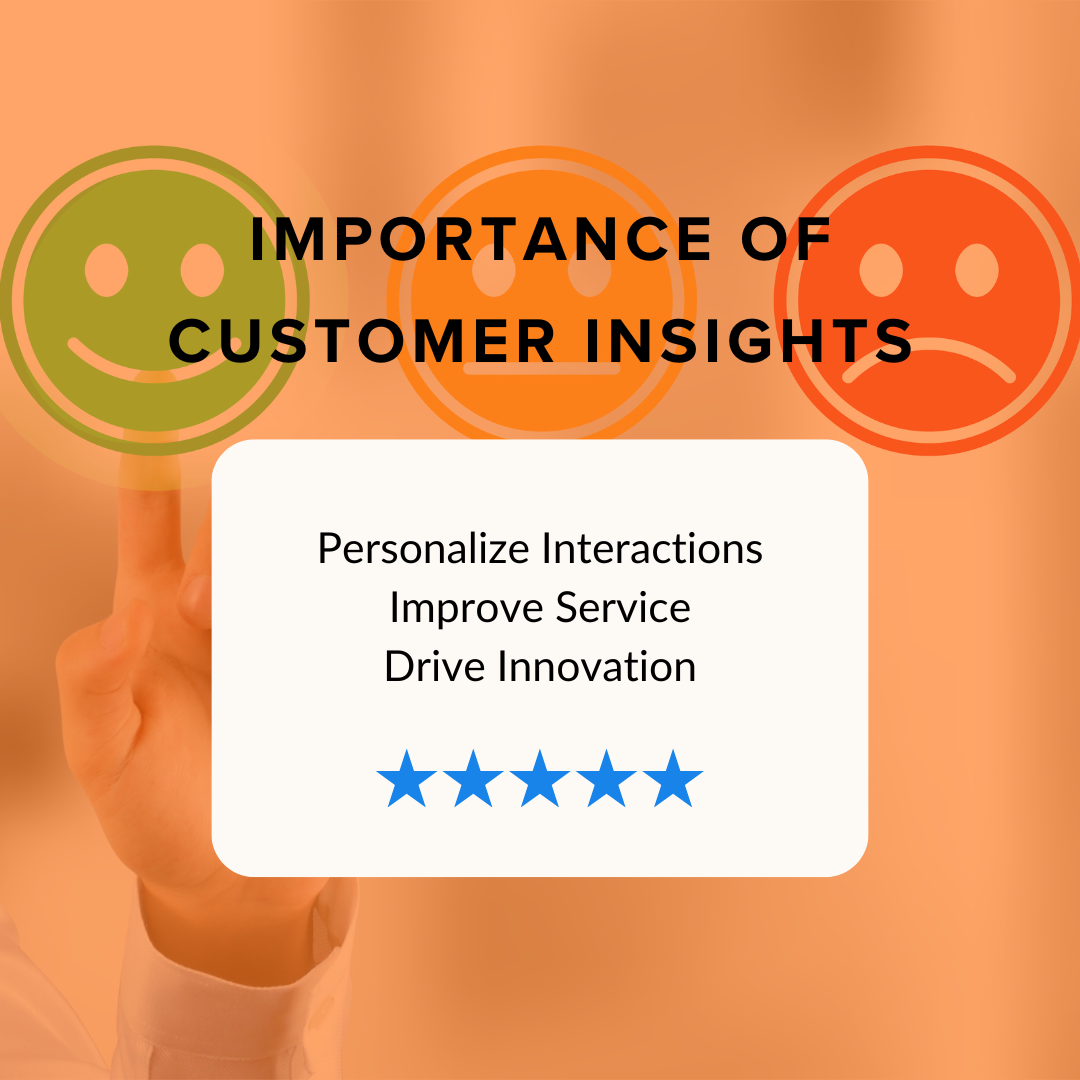
Customer insights help roofing businesses:
1. Personalize Interactions: Tailor customer interactions based on preferences and behavior.
2. Improve Service: Enhance customer service and support to meet customer expectations.
3. Drive Innovation: Develop new products and services that align with customer needs.
b. Methods for Gathering Customer Data
1. Surveys: Conducting surveys is a direct way to gather customer opinions, preferences, and satisfaction levels. Surveys can be distributed via email, website pop-ups, or social media.
2. Feedback Forms: Implementing feedback forms on your website or after service completion helps collect specific insights about customer experiences and areas for improvement.
3. Customer Interactions: Every interaction with a customer, whether through phone calls, emails, or in-person meetings, provides valuable data. Documenting these interactions helps build a comprehensive customer profile.
4. Social Media Monitoring: Observing customer interactions and feedback on social media platforms can offer insights into customer sentiment and preferences.
5. Purchase History: Analyzing past purchase data helps understand buying patterns and product preferences, which can inform future marketing and sales strategies.
c. Techniques for Analyzing and Interpreting Data
1. Trend Analysis: Identify patterns and trends in customer behavior over time. For example, noticing a spike in certain services during specific seasons can help in planning and marketing efforts.
2. Segmentation Analysis: Divide customers into segments based on demographics, behavior, and preferences to tailor marketing strategies and improve targeting.
3. Predictive Analytics: Use historical data to predict future behaviors and trends, enabling proactive decision-making.
4. Sentiment Analysis: Roofing business owners can employ text analysis tools to gauge customer sentiment from surveys, feedback forms, and social media comments, helping roofing companies understand customer satisfaction and areas for improvement.
5. Customer Journey Mapping: Analyze the customer journey to identify key touchpoints and potential drop-off points. This helps in optimizing the customer experience and increasing conversion rates.
d. Leveraging Customer Insights for Business Improvement
1. Personalizing Customer Interactions and Marketing Efforts
Customer insights in roofing software allow for highly personalized marketing, which can significantly boost engagement:
Targeted Campaigns:
- Customized Messaging: Tailor messages based on customer preferences and behaviors.
- Segmented Audiences: Group customers by specific criteria to ensure relevant marketing efforts.
- Sales Intelligence Tools: Identify new prospects in need of roofing services, enhancing the efficiency of targeted campaigns.
Enhanced Engagement:
- Personalized Recommendations: Suggest products or services based on past purchases.
- Dynamic Content: Use personalized content in emails and on websites to improve the customer experience.
2. Enhancing Customer Service and Support
Adapting customer service based on insights ensures better support:
Proactive Support:
- Anticipating Needs: Use data to address customer needs before issues arise.
- Timely Responses: Ensure staff availability during peak times to reduce wait times.
Customized Solutions:
- Tailored Assistance: Provide personalized solutions based on detailed customer profiles.
- Feedback Integration: Implement changes based on customer feedback to enhance service.
3. Developing New Products and Services
Using customer feedback and data helps meet market demands:
Identifying Market Gaps:
- Customer Feedback: Analyze feedback to find unmet needs or improvement areas.
- Trend Analysis: Monitor trends to identify emerging demands.
Iterative Development:
- Continuous Improvement: Use insights to make incremental improvements.
- New Product Launches: Develop products that align with customer expectations based on data.
Conclusion
The future of the roofing industry lies in the seamless integration of advanced CRM systems that leverage automation, analytics, and customer insights.
These technologies along with others like a project estimation tool, payment processing tool, etc, not only streamline operations but also significantly enhance customer experiences and drive business growth.
The statistics speak for themselves: businesses utilizing CRM systems see notable improvements in sales, productivity, and forecasting accuracy. As the number of roofing professionals continues to grow, adopting a robust CRM becomes indispensable for staying competitive.
Integration of advanced CRM technology is not just a trend but a necessity for roofing businesses aiming to thrive in an increasingly competitive market.
Embracing automation, leveraging analytics, and harnessing customer insights will pave the way for a more efficient, customer-centric, and prosperous future in the roofing industry.
Contact Us- Sunbase
Unlock unparalleled growth with the best roofing CRM- Sunbase Roofing CRM the tool that doesn’t just manage your business, but accelerates it. Dare to be different, let Sunbase drive your success to the next level. Contact Us.
Frequently Asked Questions
Q1. How can a CRM system improve my roofing business?
Ans - A CRM system can streamline operations, enhance customer relationships, improve sales management, and provide valuable insights into your business performance.
Q2. Is a roofing-specific CRM better than a general CRM?
Ans - Roofing-specific CRMs offer industry-specific features and workflows that can simplify implementation and improve relevance. However, general CRMs are often more affordable and customizable.
Q3. How long does it take to see results from using a CRM?
Ans- It varies, but many businesses start noticing improvements in efficiency and customer management within a few months of implementation.
I agree to receive marketing messaging from Sunbase at the phone number provided above. I understand data rates will apply, and can reply STOP to OPT OUT.


